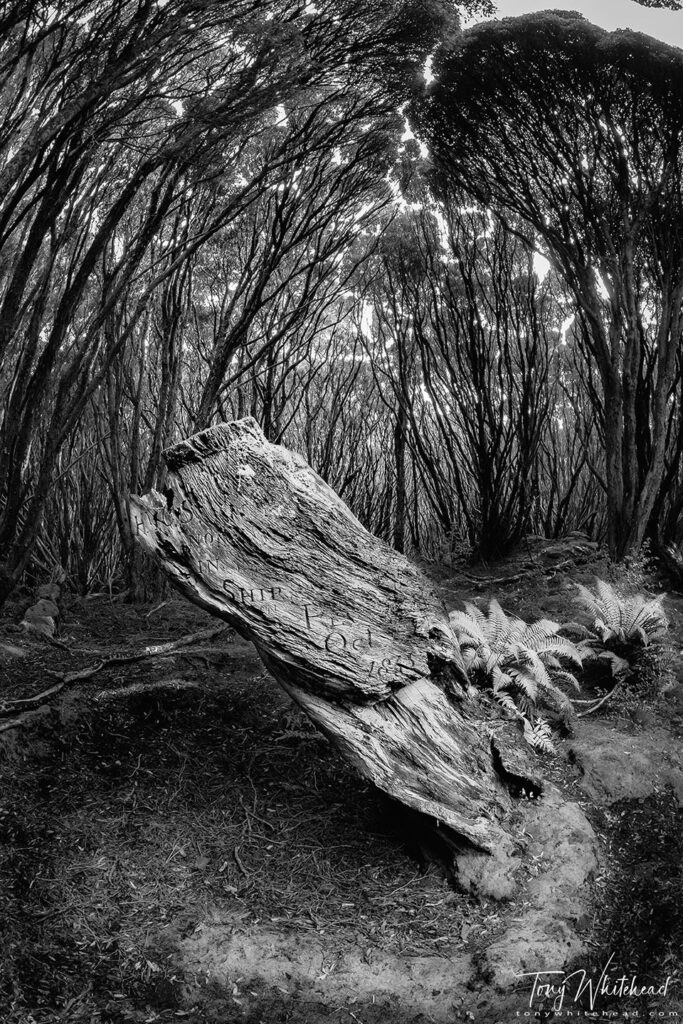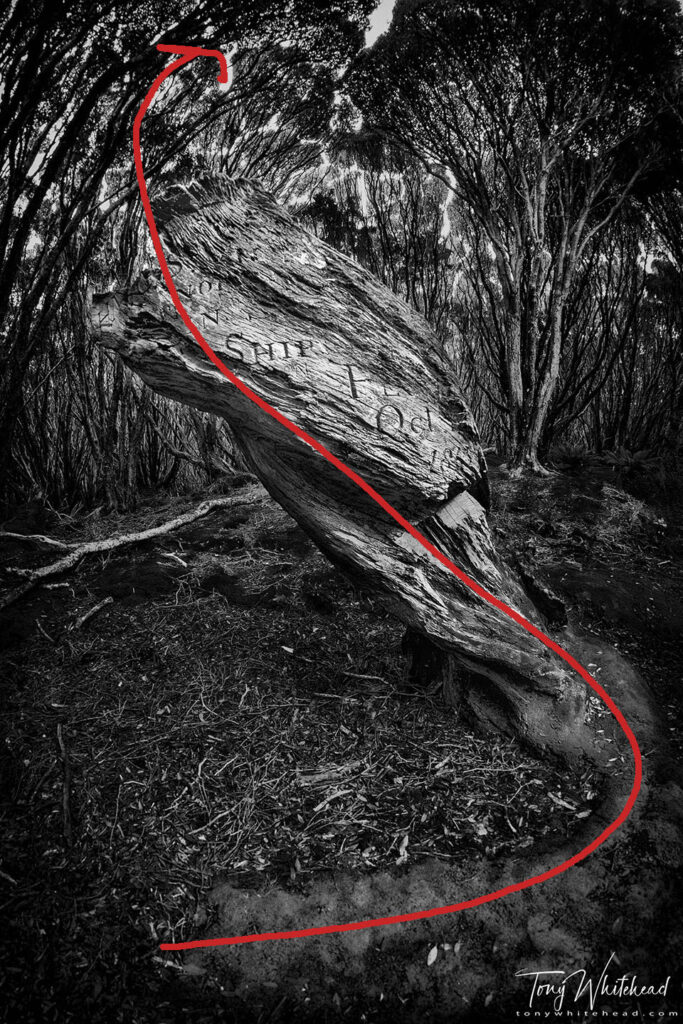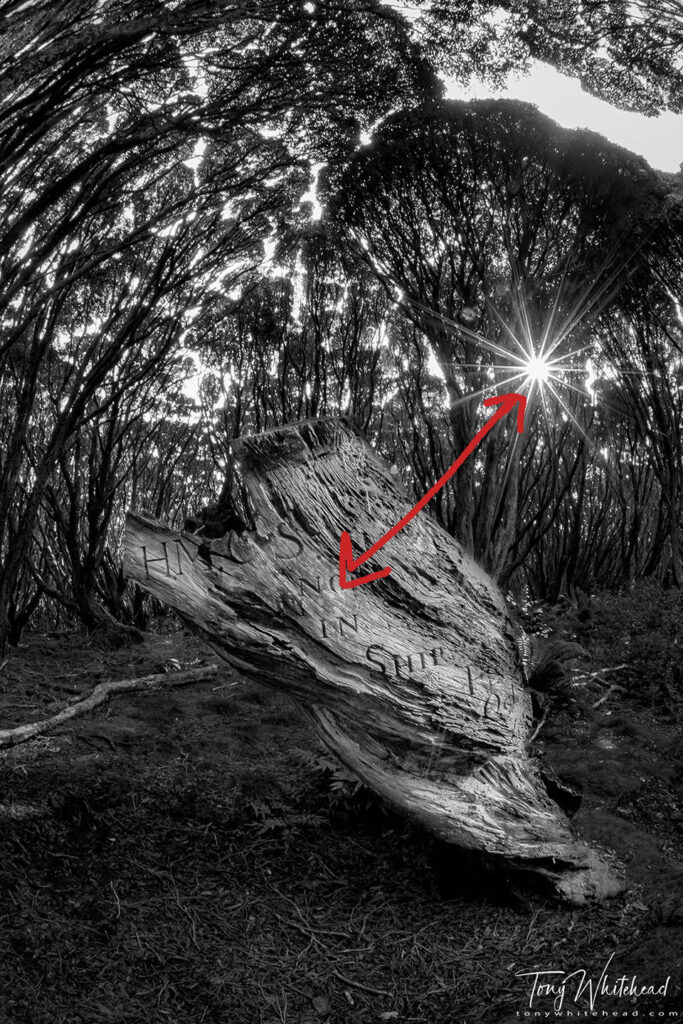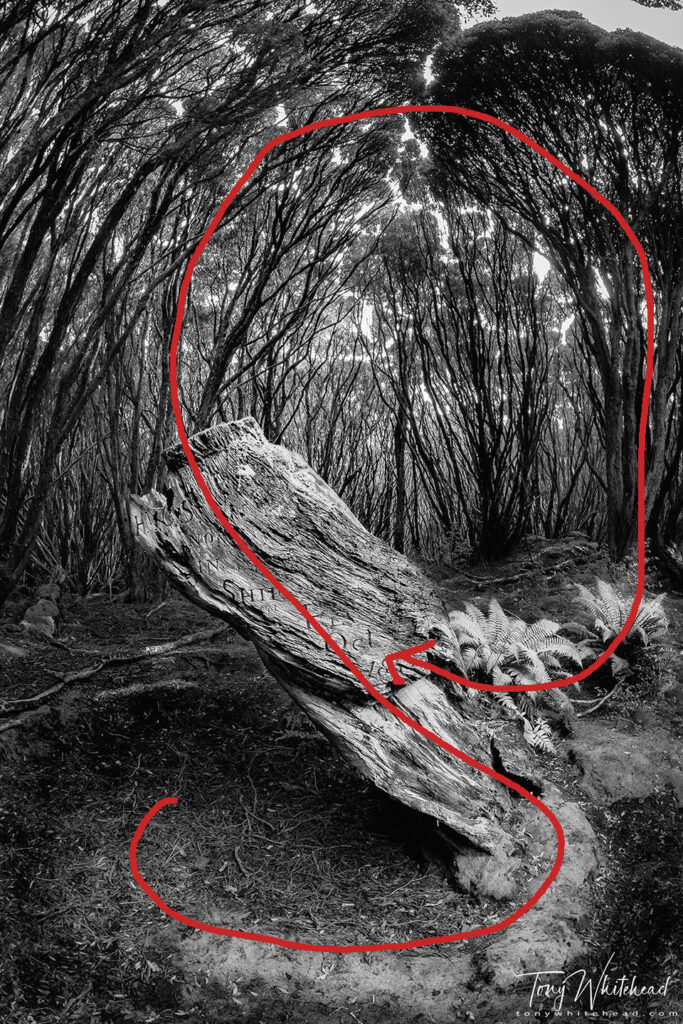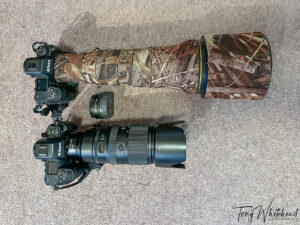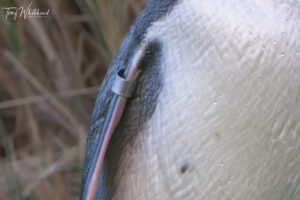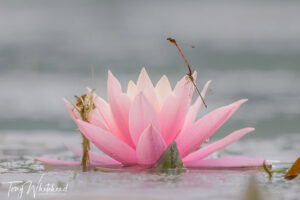Last week I wrote about my struggle to find an image of the Victoria Tree at the historical Harwicke settlement at Erebus Cove on Auckland Island. I shared three images in the process ending with the above image that is the closest I have come to achieving my goal. This week I thought I would share my analysis of the images, what I like and what is missing.
Firstly some background. After the Grafton foundered on the Auckland Islands, survivors were stranded there for 19 months. This raised public interest in castaways and the governments of Victoria, New South Wales and Queensland sent the HMCS Victoria on a mission to search for castaways. As part of this trip rabbits and goats were released on Enderby Island as a food source for castaways and a large Rātā tree was carved with the message “H.M.C.S VICTORIA NORMAN IN SEARCH OF SHIPWRECKED PEOPLE OCT 13TH 1865”.
Part of this message is still visible and a web search for images of the Victoria tree show a number of close colour images of this residual inscription. What I have been wanting to capture is an image of the tree in context, weathering amongst the rātā forest and to try an capture the mood of Hardwicke which is distinctly gloomy in comparison to the Rātā forest on Enderby. For me, this has mandated monochrome.
In my 2016 attempt I was able to use a line of moss at the base to create an S curve in the image which worked to an extent but tended to lead the eye out of the image rather than back to the main subject.
Our visit in 2020 was in the late afternoon with some sunshine so with the low sun peeping through the forest a sunstar was achievable. While interesting this doesn’t tie in with the sombre mood of Hardwicke or the plight of castaways although possibly finding that a ship had been searching for you would brighten your day. My eye just darts between the two and there is no flow to the image.
The final 2020 version uses the moss element of the the 2016 image to lead the eye to the tree and then the more complete curves of the trees and canopy along with the highlighted ferns, brings the eye back to the tree and contains the subject in a pleasing figure 8 flow.
It would be nice to say that this was all planned and deliberate but I’m afraid my compositional approach is more intuitive than deliberate. I look for what looks pleasing at the time without analysing it in detail. I am completely reliant on my left eye which can see pleasing compositions – my right eye is hopeless. Analysing the images after the event brings what my left was seeing into consciousness and is interesting. With time and discipline it can add to options at the moment of capture.
